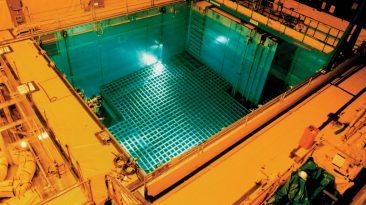Imagine a world where we didn’t need any lights, where we could detect diseases just by looking at someone, and literally see right through people’s deceptions.
These are just some of the possibilities that come along with thermal imaging technology. But what if we didn’t need cameras or clunky goggles to see the world this way?
What if that was just the way our eyes worked? Would it make us a stronger species?
Our vision works according to a pretty basic system: If an object emits or reflects light then we can see it, if it doesn’t then it’s invisible to us, pretty simple right?
Well pretty simple until you realize that every object emits light, some just produce light that we can’t see, called infrared. Could our eyes ever adapt to seeing this light instead? What would that reveal about the world around us?
In the most basic sense, thermal imaging works by showing you the heat that radiates from an object; it detects temperature by recognizing different levels of infrared light.
You’ve seen an example of this where bright red colors represent high temperatures, and dull blue colors represent low temperatures, but have you ever stopped to think how helpful it could be to see the world like this?
Well for starters, life would probably get a lot safer. Search and rescue missions would be easier, as police officers could easily scan large areas for body heat. Firefighters could see through smoke-filled rooms with no problem.
Our roads would be safer since we’d be able to recognize animals or people beyond the reach of our headlights
If a burglar tried to break into your house, there’d be no cover of darkness to hide in! And if you caught anyone trying to rob you, you’d be able to track them for a long distance as they ran away.
Scientifically, medical ailments would also be a lot easier to catch. Things like diseases, circulation problems, infections, and even cancers cause temperature changes that would quickly be detected.
Our new found vision wouldn’t just help fight the things that plague our bodies, but also our minds. Your nervous system is continually tweaking your blood flow based on your emotions. With thermal vision we’d be able to pick up those fluctuations just by looking at you.
If someone gets anxious or scared, their nose would look blue because all their blood is flowing away from the outer layer of the body to fuel their muscles for fight or flight.
Some psychologists are already using thermal cameras to recognize these signs to help patients with PTSD. Not everyone has access to thermal cameras, but if everyone had thermal vision then a lot more people could be helped.
With all these benefits in mind, scientists at the Washington University School of Medicine decided to test if anything could be done to get our eyes to see infrared light.
They found that the human eye could only recognize infrared light when it gets flooded by huge amounts of infrared photons over a short period of time, making the idea of everyday thermal vision pretty unrealistic.
Even it was possible for our eyes to recognize this light, experts say that our vision wouldn’t be great. Our eyes are covered in warm blood vessels that emit their own light, which would be stronger than the incoming signals from external sources. In essence, it would be like constantly trying to look out into the night from a brightly-lit room.
Subscribe to What-If on Youtube or follow the show on Facebook Watch.
Sources
- “The World Looks Different Through An Infrared Camera”. Allain, Rhett, Rhett Allain, Jeffrey Camp, Graeme McMillan, Aarian Marshall, Sandra Upson, Kevin Hartnett, and Jeffrey Camp. 2019. WIRED. Accessed February 3 2019.
- “Human Infra-Red Thermal Vision”. 2008. Human Enhancement And Biopolitics. Accessed February 3 2019.
- “Thermal Imaging To Diagnose Disease”. 2019. Vision Online. Accessed February 3 2019.
- “Over 60 Unexpected Uses Of Infrared Thermal Imaging Camera Images”. 2019. Reduction Revolution. Accessed February 3 2019.
- “11 Unexpected Uses For Handheld Thermal Imaging Cameras – Opgal”. 2016. Opgal. Accessed February 3 2019.
- “The Man Who Makes You See The Invisible”. Fleming, Nic. 2019. bbc.Com. Accessed February 3 2019.
- “Your Fear Is Written All Over Your Face, In Heat”. Engelhaupt, Erika. 2014. Science News. Accessed February 3 2019.
- “How Would Life Be Different On A Planet Where Intelligent Life Saw Heat Instead Of Colour?”. Worldbuilding Stack Exchange. Accessed February 3 2019.
- “Under The Right Conditions, Humans Can See Infrared” 2019. Gizmodo.Com. Accessed February 3 2019.



























